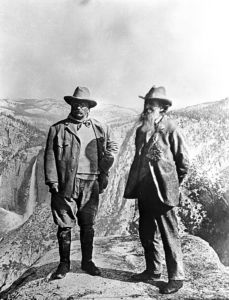Curiosity leads me on all kinds of adventures. For example, I often find myself caught in swirls of reading fascinations. For a while, I was hooked on cannibalism and the Donner Party. I read three books about it: Symphony for the City of the Dead by M.T. Anderson, To Stay Alive by Skila Brown, The Snow Fell Three Graves Deep by Allan Wolf. Then it was Survival and Polar Exploration, both at the North and the South Poles: Dead Mountain by Donnie Eichar, Byrd & Igloo by Samantha Seiple, Locked in Ice by Peter Lourie, and Shipwreck at the Bottom of the World by Jennifer Armstrong. I have gotten stuck in little known side stories of World War II: The Perfect Horse by Elizabeth Letts, Port Chicago 50 by Steve Sheinkin, Pure Grit by Mary Cronk Farrell, and Sabotage by Neal Bascomb. Then, for a short while, it was Teddy Roosevelt. I read one book specifically about him, Death on the River of Doubt by Samantha Seiple, but then he ended up as a side story in two other books I read. One was about Native Americans and football: Undefeated by Steve Sheinkin. The other was Bugged: How Insects Changed History by Sarah Albee, which was so disgusting that I couldn’t put it down. True stories of people’s lives can be so fascinating. Truth truly is stranger than fiction at times.

Teddy Roosevelt was a fascinating person. He was a President, a Rough Rider, and a Bronc Buster. He actually went on an African safari, was a driving force behind the Panama Canal, and the inspiration for the Museum of Natural History. Within the text of the story of Teddy Roosevelt’s adventures down the Amazon River, Death on the River of Doubt, is a fascinating primary source. After he survived, Teddy, in a journal, wrote a list of Teddy’s Travel Tips for anyone else who would undertake such an adventure in the future. The author, Samantha Sieple, took Teddy’s notes and formatted them in a very reader-friendly fashion. What a great source to use as a pre-reading activity!
While not all of our students get to travel, it is still fun to think about traveling, either right before or right after a break. (This is part of the beauty of reading; we may not be able to actually do something, but by reading about it, the adventure or experience suddenly becomes possible, at least in the realm of our imagination). Before a break, it is fun to anticipate what all you might need and what might happen. After a break, it is good to look back on what went wrong, what you forgot, what you took that you didn’t need, and what you might do differently next time. Either way you frame it, Teddy’s Travel Tips is an excellent text to spark curiosity and help our students hone their reading skills.
…provides a very non-threatening way to not only introduce them to a non-fiction text but also to the world of primary sources.
Before reading either the Travel Tips, or the entire book, I ask my students to brainstorm, to hook into what they already know, to place themselves in President Roosevelt’s shoes. They can either work individually or in groups. I offer them a Mission. I give them Things to Consider. Then I ask them to come up with Their Plan. Having prepared them this way, I then invite them to read the two page excerpt from the book known as Teddy’s Travel Tips (copyright permission granted by Samantha Sieple). I love this because I have helped them learn; I have helped prepare them for expanding what they know by tying into what they already know. I also love this because it provides a very non-threatening way to not only introduce them to a non-fiction text but also to the world of primary sources.

I love bringing primary sources to my students’ attention when I can. It is not something they will often find on their own. It is quite likely a type of source that they have never encountered. It allows me to give them a first person perspective, usually on history, but it could be other topics as well. Most of my teens prefer to read books written in first person point of view. They are often reluctant to tackle non-fiction; however, primary sources provide me a way of giving my students first person point of view. Beyond that, primary sources offer a nice transition piece to longer, more complex non-fiction texts.
This text within a text offers options. If my students just want to think about what would go into a successful expedition, the list of Travel Tips satisfies that curiosity. If my students become really intrigued, then they can read the entire adventure. Either way, I have offered my students a successful way to activate their curiosity, to learn something new, and to connect with non-fiction texts.
Resources
Please login or register to claim PGPs.
Alternatively, you may use the PGP Request Form if you prefer to not register an account.



